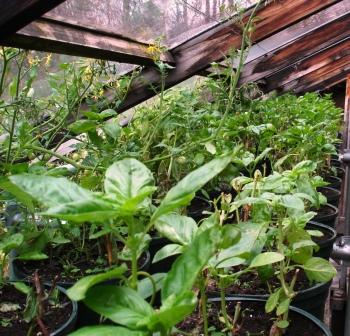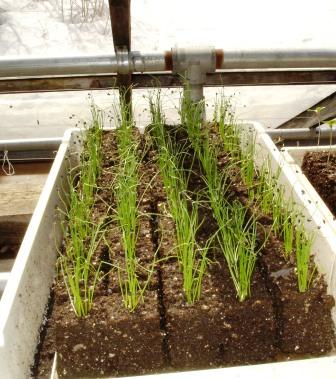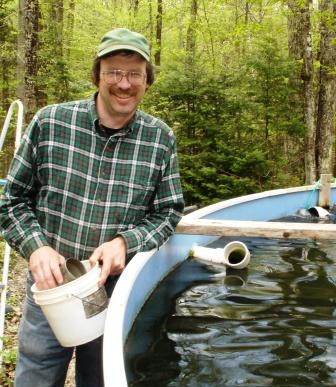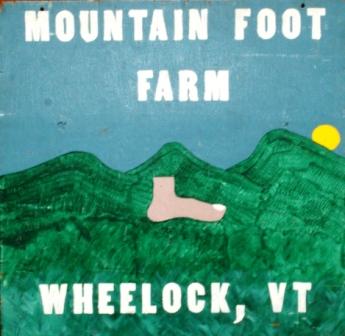Navigation |
How We Grow |
Photos |
VegetablesThe plant growing methods we have always used have been referred to in the past as "organic", but since October 2002 the "O" word is not allowed to be used by farmers not certified according to USDA regulations. We choose not to be certified for a variety of reasons. Actually, we go beyond certified organic requirements in a number of areas. For example, USDA organic rules allow the use of a number of non synthetic (but toxic) insecticide sprays. We do not use any insecticide sprays of any kind. We also do not use any kind of fungicide or herbicide sprays. How can we grow plants successfully without using any insecticides? Our main techniques are as follows: We have many (relatively) small garden plots. We grow a wide variety of plants. We use extensive crop rotations. For some crops we use long distance crop rotations. This means that there are a lot of edge conditions, a lot of diversity, and the crops are in different (in some cases, widely different) places from year to year. These practices discourage large populations of harmful insect pests and encourage a variety of helpful insects (eg. insects that prey on the insects pests). Combined with timely scouting and a limited amount of hand picking of certain insect pests results in as good, if not better control of insect pests than any spray program (organic or conventional). We start all our own transplants that we use in our home greenhouse. We primarily use soil blocks made from a compost based potting soil to start the seeds. We have an old small farm tractor that is used for spring tillage, hauling stuff around, mowing pastures, and woods work. We have two BCS rear tine roto-tillers, and various wheel hoes, hand tools and push seeders. Most tasks on this farm are not done from the seat of a tractor. We presently have about an acre under cultivation. We have been growing vegetables for sale (we grew them just for ourselves before that) since 1988. TroutThe trout are raised in spring water fed tanks in the barn. Each year we buy fertilized trout eggs, hatch them out in special hatching trays, then move them to fry troughs and then grow-out tanks. The trout are fed commercial trout feed pellets. Trout are carnivores and therefore require a high protein feed. A main ingredient in the trout feed pellets is fish meal. At present, there is no such thing as organic trout feed, so our trout could not be considered organic. However, our trout are never medicated. We maintain their health by raising them at (relatively) low densities, in high quality cold water, with a moderate feeding program. Our trout grow more slowly than typical farm raised trout, but the result is higher quality. We have been raising trout since 1991. |



|
